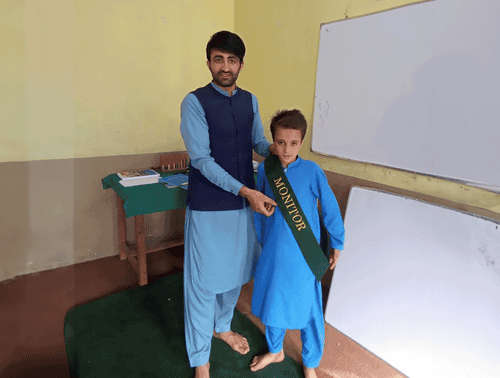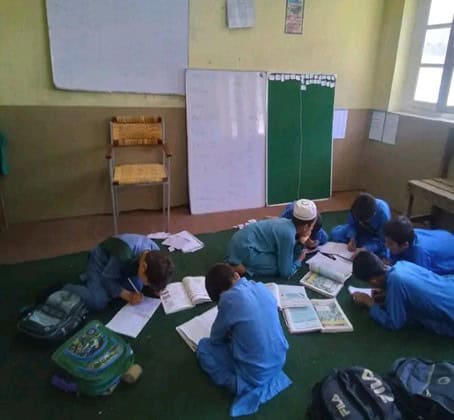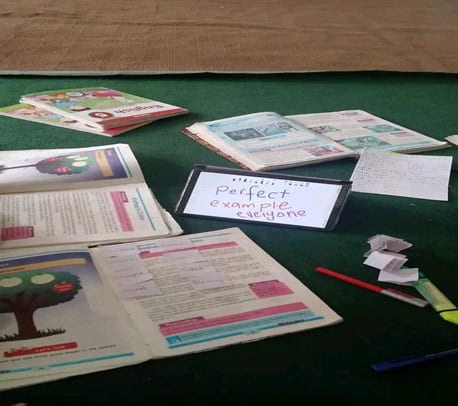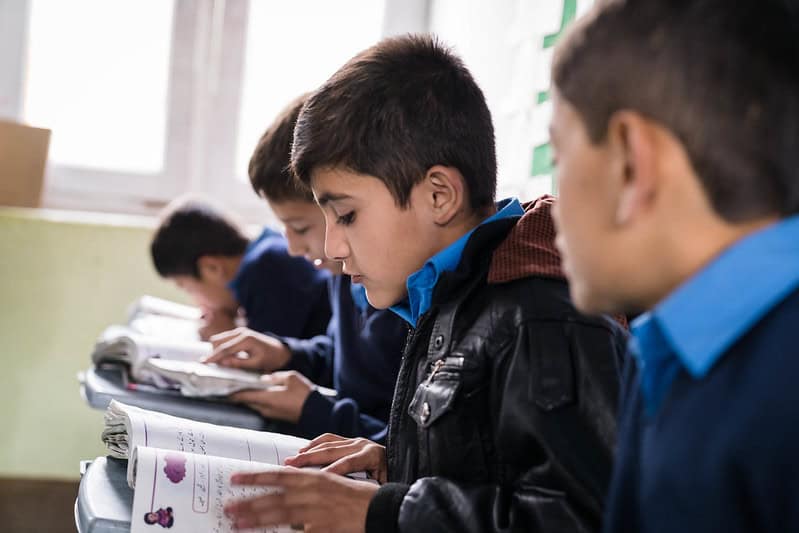Meet Mehrab Hussain, a teacher at Government Primary School Garamchashma in Pakistan, who is determined to change the way his students learn for the better. Since 2020, he has been dedicated to transforming traditional teaching methods and unlocking the full potential of his students. Mehrab’s pursuit of educational development has led to remarkable changes in his classroom environment, inspiring both students and fellow educators.

Identifying the Challenge
After assessing learning levels using Schools2030 tools, Mehrab discovered a common challenge among his students: difficulties with reading in both English and Urdu. This was causing some students to fall behind. Rather than being discouraged, Mehrab saw this as an opportunity to redefine the learning experience.
Transforming the Classroom Environment
Picture this: classrooms transformed, messy wall charts replaced, floors carpeted, and vibrant notice boards covered with new words. Mehrab, understanding the psychology of his students, decided to interact with them differently, believing that this mindset should be the norm for all teachers.
Over four to five months, he experimented with several techniques designed to enhance his students’ reading skills and overall engagement:
- Repetition of unknown words: Reinforcing new vocabulary through consistent practice.
- Known to unknown approach: Building on familiar concepts to introduce new ones.
- Sounds of letters and blending: Teaching phonetics to improve reading fluency.
- Grouping words with similar sounds: Helping students to recognise patterns in language.
- The innovative “word box” method: Using a tangible box filled with words to make learning interactive.
- Utilising a green notice board for daily word repetition: Providing an eye-catching visual aid for continuous learning.
- Engaging students in a thrilling word game, focused on teamwork: Making learning fun and collaborative.
- Dynamic learning environments, shifting classes both indoors and outdoors: Keeping the learning experience fresh and exciting to maintain motivation.
One of Mehrab’s most effective strategies is story development. After sharing stories in class, he challenges students to rewrite them in their own words, unlocking their creativity. This method not only improves students’ writing skills but also encourages critical thinking and personal expression, as they are challenged to discover the meaning behind the story and convey it through their own perspective.


Extending Learning Beyond the Classroom
Mehrab has also launched a YouTube channel, “Mehnad Education and Khowar Talim,” where he shares English lessons with his students to progress language reinforcement in non-school settings. This ensures that learning continues outside the classroom, allowing students to revisit lessons and practice at their own pace.
Transforming Student Behaviour
After implementing the new innovations, Mehrab could identify the profound impact of these techniques on students. By creating a supportive and encouraging environment, shy students who were lacking confidence were now thriving, positive and engaged learners. Merhab shares that his once most silent student is now one of the most confident, expressive and engaged participants, showcasing a remarkable transformation of confidence and potential through Mehrab’s approach.
“After participating in the Schools2030 programme and acquiring various training in Assessment and Human-Centered Design (HCD), my traditional teaching practices have changed. By using various engaging techniques, we ensure that children not only learn effectively but also find joy in their education. When children are happy and enjoying their learning, they can master even the most challenging concepts. Now, teaching and learning are exciting processes for me. I enjoy teaching, and my students enjoy learning”
By employing diverse strategies such as repetition, the known-to-unknown approach, phonetic instruction, the “word box” method, and story development, Mehrab has created an engaging and supportive educational atmosphere. His YouTube channel extends learning beyond the classroom, ensuring continuous student improvement. And these creative approaches have transformed hesitant learners into confident, active participants, demonstrating the profound impact of a dedicated, student-centred educator.
Mehrab’s commitment to improved learning led him to apply these diverse methods on a daily basis, ensuring that every lesson brought something new and captivating to his students. His dedication has turned learning challenges into opportunities for growth, demonstrating that innovative teaching can significantly enhance student outcomes, setting a new standard for effective teaching and inspiring others to follow his innovative path.
